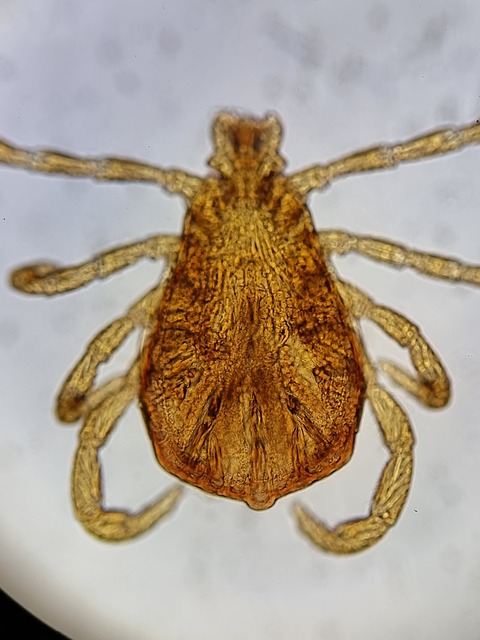Lyme disease is something most pet parents have heard and worry about. By knowing a little more about this disease, we can help our pets get the help they need on time and increase the chances of a thorough recovery.
In this article, we’ll provide short answers to questions such as:
- How does a dog act with Lyme disease?
- Is it rare for a dog to get Lyme disease?
- What are the 3 stages of Lyme disease?
- What happens if Lyme goes untreated in dogs?
- Does Lyme disease shorten life expectancy in dogs?
- Can a dog live a good life with Lyme disease?
We’ll also discuss which parts of your dog’s body Lyme disease affects, and how it can change their behavior.
Disclaimer: Please refer to the information in this article as a guide only. If you want specific information tailored to your pet’s condition, contact your veterinarian.
How does a dog act with Lyme disease?
If a dog has Lyme disease it may show some of the following symptoms (source):
- Decreased appetite.
- Increased temperature.
- Lethargy (not as active as usual).
- Problems with their joints.
Sometimes, Lyme disease can also affect other parts of your dog’s body such as their kidneys, joints, and nervous system (we’ll talk more about that later).
It’s good to be aware that it can take months for the symptoms of Lyme disease to develop, and it’s also a disease that can affect humans. However, this doesn’t mean you can catch it directly from your dog.
Humans become infected by being bitten by a tick with the bacteria, just like dogs do.
If you suspect that there is something wrong with your pet’s health it’s best to take them to your veterinarian for proper diagnosis and treatment. Similarly, if a tick has recently bitten you and are worried about it, contact your doctor.
Is it rare for a dog to get Lyme disease?
The possibility for your dog to become infected with the bacteria that causes Lyme disease depends on their exposure to the tick species that carries it.
Veterinarians always recommend treating your pets for both endoparasites (such as worms) and ectoparasites (for example fleas and ticks).
It’s always better to try to prevent diseases rather than cure them, and when it comes to diseases associated with parasites, there are a range of products to help your pet.
Another thing you can do to help reduce the chances of your dog getting Lyme disease is to restrict their access to places where ticks live, such as areas with long grass or bushes.
It’s also important to check your dog regularly for ticks and remove them correctly.
How long does it take for Lyme disease to affect a dog’s kidneys?
In some cases, Lyme disease can cause problems with your dog’s kidneys. Not much is known about how or why this happens. (source)
What are the 3 stages of Lyme disease in dogs?
Veterinarians often refer to Lyme disease as having 3 stages, which we’ll explain below (source).
After a bite from a tick that carries the bacteria, a dog is considered to be in the ‘localized’ stage. This means that the bacteria is just in one area and hasn’t had the time to spread yet.
The next stage is called ‘early disseminated’ Lyme disease and is when the bacteria has had enough time to move to different areas of a dog’s body using their blood.
The last stage is the ‘late disseminated’ stage which is when the bacteria have had enough time to move everywhere in the body.
Do dogs sleep a lot with Lyme disease?
One of the symptoms that can be associated with Lyme disease is lethargy, which refers to decreased activity in pets.
Whether your pet can be considered lethargic, depends on their character. For those who are usually very active, it can be easier to spot. Whereas for our furry friends who tend to sleep most of the day anyway, it can be more difficult to notice.
What happens if Lyme goes untreated in dogs?
If Lyme disease is not treated in dogs, it can progress to involve parts of your dog’s body such as the heart, nervous system, and kidneys (source).
As with most diseases, the longer it is allowed to progress, the more serious it becomes and the more it affects your pet’s quality of life.
It’s always best to seek veterinary advice early on, rather than waiting until your dog’s condition is more serious. Early diagnosis and treatment often improve the chances of recovery from curable diseases.
Does Lyme disease shorten life expectancy in dogs?
If untreated, or diagnosed too late, sadly, Lyme disease and its associated symptoms, can decrease your dog’s life expectancy.
As with all conditions, seeking veterinary advice early on drastically increases the chances of your pet making a thorough recovery.
Can a dog live a good life with Lyme disease?
If diagnosed and treatment is started as soon as possible then there are a few things that can be done to help your dog live a good life including:
- Antibiotics.
- Medicines to relieve symptoms such as pain.
- Immune-targeted medicine in cases where the immune system is involved.
As we mentioned earlier, there are a few things you can do to reduce the chances of your pet being affected by diseases involving insects such as ticks. You can read more about this topic in our articles Tick Talk – strategies for Preventing and Removing Ticks and Flea and Tick Prevention Tips – recommendations for Dog Owners.
Conclusion
Lyme disease can be a pretty daunting topic, however, we hope that after reading this article, you have the information you need to enable you to make decisions to help your pet live as happily and healthily as possible.
You can read more about how to help your dog be as happy and healthy as possible in our articles:
- How to take care of a dog for their good health: a comprehensive guide
- The benefits of a comprehensive dental care plan for dogs

Charlotte qualified as a veterinarian in 2023 and has been working as a writer for several years helping pet parents understand how to help their pets live happy healthy lives whilst pursuing her interests in wildlife conservation.
She enjoys traveling and has undertaken positions in Belgium, Spain, Austria, Germany, and the Galapagos and has a 15-year-old rescue dog called Chiki.





